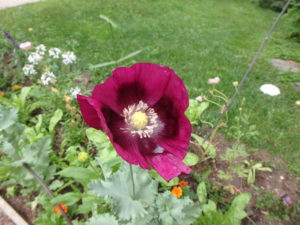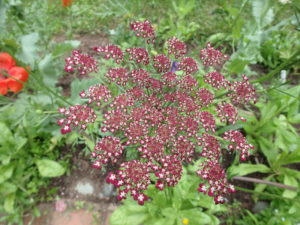Ten Fabulous Annual Flowers I Love to Grow
I want colorful flowers growing alongside my front walkway every day from May to November, and generally have them. I do so by growing annual flowers. I grow more than 100 species of flowers elsewhere on my property but the vast majority are perennials that only bloom for a few weeks each year.
All plants (and most animals) have a strong need and desire to maintain their genetic lineage. Their “goal” in life is to pass on their DNA to a new generation. Perennial plants and trees can assume that if they don’t have any descendants this year, they can next year. Not so for annuals. If they don’t bloom and produce seeds this summer, their lineage stops. There is no second chance.
So to get continual blooms from your annual flowers, all you have to do is pluck off the flower heads once they start to look bedraggled. That is known as “deadheading.” The flowers seem to ”know” that if the flowers are gone, so are the potential seeds, and they keep on blooming. Here are some of my favorite annuals.
Pansies. These are my early bloomers. I buy field grown pansies and plant them in the walkway or in a whisky barrel in April or May for early color. By now they are lanky and fading, so I will either cut them back hard for fall blooms, or just yank them.
‘Senorita Rosalita’ cleome. This is a Proven Winner trademarked variety, so it cannot be purchased as seed or in 6-packs. It is generally sold in 4-inch pots or larger and costs more than common annuals. Unlike ordinary cleome, ‘Senorita Rosalita’ stays short and compact, has no thorny protuberances on the stems, and does not have a strong noxious scent. And it blooms continuously all summer. It likes full sun and does well in hot, dry locations. ‘Senorita blanca’ is a similar white variety. I grow this each year, often starting plants from seed, though they need at least 12 weeks to get to the size needed to plant outside. Like all the plants on my walkway, these like plenty of direct sunshine. The flowers are cute little round balls of color- magenta, pink, white. The stems dry well, and I often keep their bright blossoms in a dry vase all winter. I hang them upside down until the stems are dry enough to support the flowers.
Brazilian verbena (Verbena bonariensis). This is one of my favorites, and adds height to the display. It has thin stems up to 5 feet tall, but rarely needs staking because the purple blossoms are quite small. If you cut it back as it grows, it will branch nicely, providing more blossoms. The blossoms keep on looking good even after light frost.
Licorice plant (Helichrysum petiolare). This is a foliage plant with no flowers that I’ve ever seen. It stays low and branches nicely with silver-gray or yellow-green foliage. I mainly use it in my window box by the front door, but it also works in the ground. Cut stems are fabulous in a vase, too.
Annual poppies. These are blooming for me right now in various colors: orange, purple, yellow (California poppy) and polka dots. Some are doubles, meaning they have extra petals. Annual poppies are an exception to the rule that annuals keep on blooming all summer, but I don’t care. I love these beauties with their gray or silver foliage and delicate blossoms. Many annual poppies scatter their seeds and will start up next spring on their own.
Scaveola. This plant takes abuse, so I put it in my window box with licorice plant – where drying out is more of a problem than in the ground. It can look dead from dehydration, but a watering brings it right back. Its stems are generally 6 to 12 inches loaded with small purplish-blue flowers.
Gomphrena. A variety of verbena, this comes in purples, magenta, white, pink and more. It creates a cascading mass of bright flowers that bloom all summer.
Zinnias. Fabulous flowers. They come from short (Profusion series are under a foot tall) to tall (Benary’s Giant, 4 feet tall). Keep picking them for vases, and they will branch and produce more flowers. A wide variety of colors, including lime green. I plant these by seed in a bed in my vegetable garden, just scattering last year’s dried flowers over and raking them in.
Wild carrot. (Daucus carota ‘Dara’). One of my new favorites. This looks like Queen Anne’s lace, which is a biennial wild flower, but this is an annual that comes in a variety of colors – white, pink and burgundy. I bought some started plants and they are blooming nicely.
Salvia. There are hundreds of kinds of salvias, both annual and perennial. I grow annual salvias mainly for their vertical form (8 to 24 inches tall spikes) and their intense blue and purple. They also come in fire engine red (which I tend to avoid), white and bi-color. All are tough as nails in hot sun.
I realize it’s hard to find nice annuals now – many nurseries have sold all the good ones. But many can be started by seed, even starting now. Just read the seed packets to see how long they need to bloom. I love my annuals, and their long-running show of beauty.
Henry is the author of 4 gardening books. His web site is www.Gardening-Guy.com. See extra photos for his articles at https://dailyuv.com/





